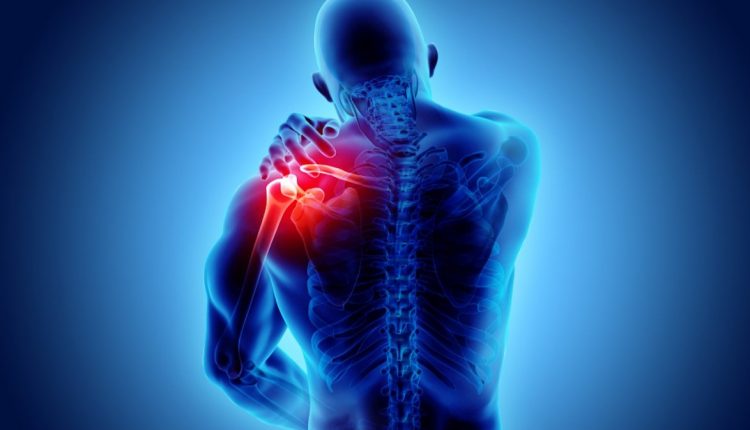
Chronic pain, causes and remedies
Chronic pain is continuous or recurrent pain at intervals of months or years. Unlike acute pain, which is merely a symptom of something else, chronic pain can itself become the disease: in particular when it is associated with dysfunction, even without obvious lesions, of the peripheral nerves and/or the central nervous system
Chronic pain, how the painful sensation arises
Pain represents a defence mechanism of the individual against external insults that endanger his physical integrity.
Acute pain is related to stimulation, so-called ‘nociceptive’, of the many tiny nerve pain receptors (‘nociceptors’) in the subcutis.
These receptors send an impulse towards the central nervous system when they are stimulated by trauma, intense pain, tissue swelling caused by infection, etc.
Stimulation of nociceptors is also the trigger for the automatic local reflexes that cause us to immediately move our fingers away from a hot iron, as well as those general reflex responses that cause us to immediately move a step or two away from the iron.
Mechanisms and causes of chronic pain
There are several mechanisms underlying chronic pain: most often an excessive and persistent stimulation of the ‘nociceptors’ or a lesion of the peripheral or central nervous system (true chronic pain with a clearly identifiable basis), but there are also frequent forms of chronic pain that do not seem to have a real, clearly identifiable cause and in this case we speak of neuropathic pain.
Well-known (and very annoying) cases of neuropathic pain are those of the lady of a certain age who has had shingles and who continues to experience pain even when the herpes blisters in the area have disappeared, or the well-known ‘phantom limb syndrome’: the pain of someone who has undergone an amputation, yet continues to report a painful sensation at the missing limb.
The chronic pain of migraine is somewhere in between these two types of chronic pain.
Psychological aspects of pain
In both acute and chronic pain, the pain we experience at that moment is not something predetermined and ‘static’, but is actually the sum (variable) of two distinct effects:
- The transmission of the pain nerve impulse along the nerve pathways of pain: fibres that start from the ‘nociceptors’ and arrive at the spinal cord, followed by other fibres that ascend to an area, deep in the brain, called the ‘thalamus’, and finally followed by further nerve fibres that ascend from the thalamus to the ‘cerebral cortex’.
- The psychological colouring that the cerebral cortex, the most sophisticated district of our nervous system, gives to the nerve sensations that reach it from the periphery. Neurologists use the term ‘integration’ to define this sort of manipulation of the pain impulse by the cortex and to emphasise how this manipulation is linked to our affective, emotional and psychological situation at that moment (this is precisely the reason why we may not notice, even for long enough, an object that is hurting us or an iron that is hot, if we are focused on something else!).
How do we assess the intensity of pain?
From what has been said, the individual’s personal experience and the psychological colouring of the painful sensation that, starting from the ‘nociceptors’, arrives at the cortex is fundamental: this is, in fact, the pain perceived by the individual.
Consequently, various subjective instruments for the self-assessment of pain have been codified, which take the form of questionnaires (‘verbal numerical scale’, ‘verbal rating scale’) or even a kind of decimeter (‘visual analogue scale’ or VAS).
Numerous ‘pain diaries’ have also been devised, filled in directly by the individual, with questions such as: does the pain always occur at certain times? What were you doing when you felt the pain?
Among the more objective pain assessment techniques, used only by the physician observing his patient, the ‘facial expression scale’ is widely used.
Chronic pain and remedies
Chronic pain should be treated as a real disease and it is necessary to contact experienced professionals to investigate its causes and especially to alleviate its symptoms.
Chronic pain is a major cause of disability and requires appropriate pharmacological and psychotherapeutic treatment.
Fibromyalgia, osteoporosis, arthrosis, chronic arthritis, but also primary headaches, lumbosciatica, pain of osteoarticular origin and bone metastases or neuropathic pain, such as post-herpetic or trigeminal neuralgia: for each of these pathologies, the intervention of the algologist, the so-called ‘pain doctor’, may prove useful.
Read Also:
Emergency Live Even More…Live: Download The New Free App Of Your Newspaper For IOS And Android
Fibromyalgia: Where Are The Tender Points That Cause Pain On Palpation?
Fibromyalgia: The Importance Of A Diagnosis
Rheumatoid Arthritis Treated With Implanted Cells That Release Drug
Oxygen Ozone Therapy In The Treatment Of Fibromyalgia
Everything You Need To Know About Fibromyalgia
Long Covid: What It Is And How To Treat It
Long Covid, Washington University Study Highlights Consequences For Covid-19 Survivors
Long Covid And Insomnia: ‘Sleep Disturbances And Fatigue After Infection’
How Can Fibromyalgia Be Distinguished From Chronic Fatigue?
Fibromyalgia: Symptoms, Causes, Treatment And Tender Points
Treating Pain With Oxygen Ozone Therapy
Headaches: Migraine Or Cephalea?


